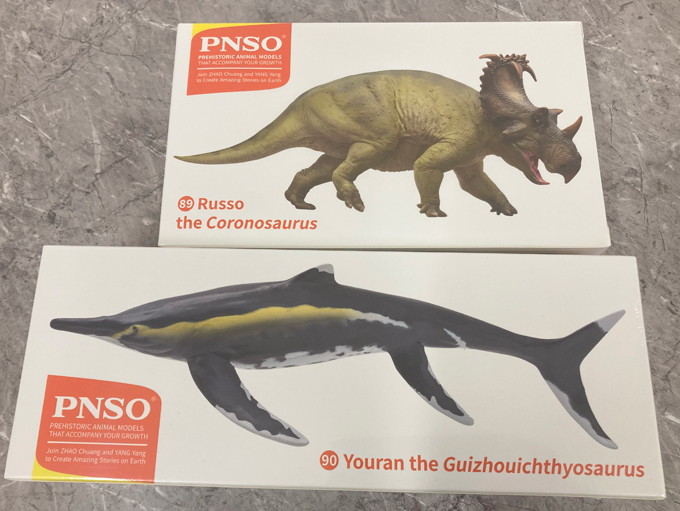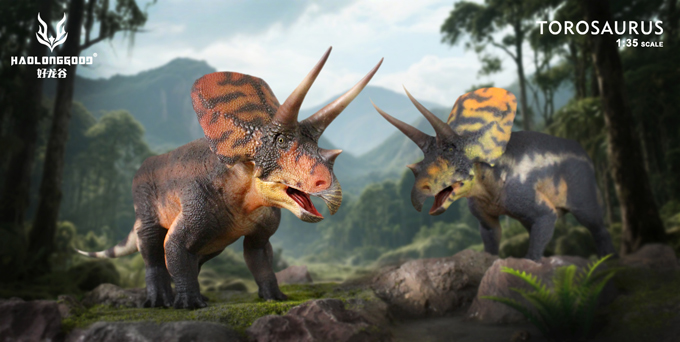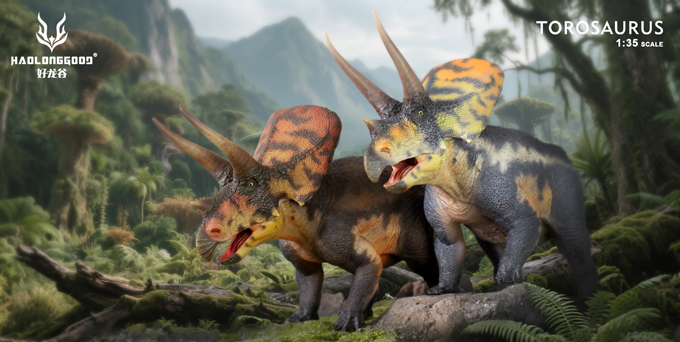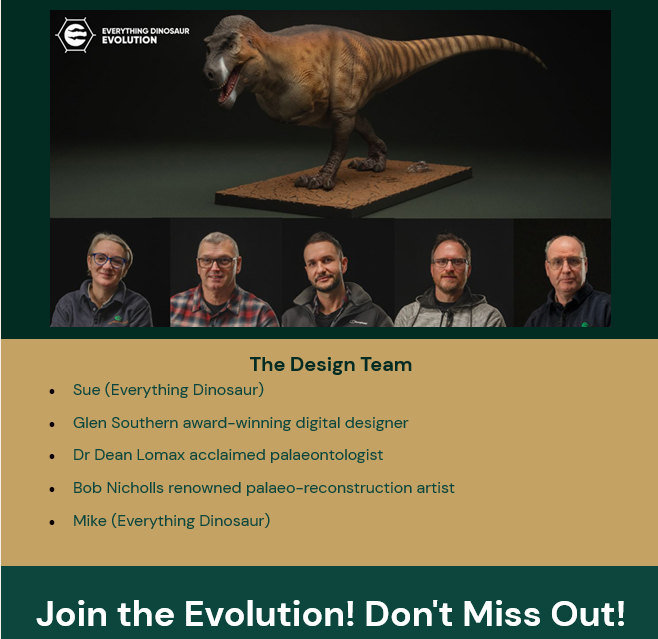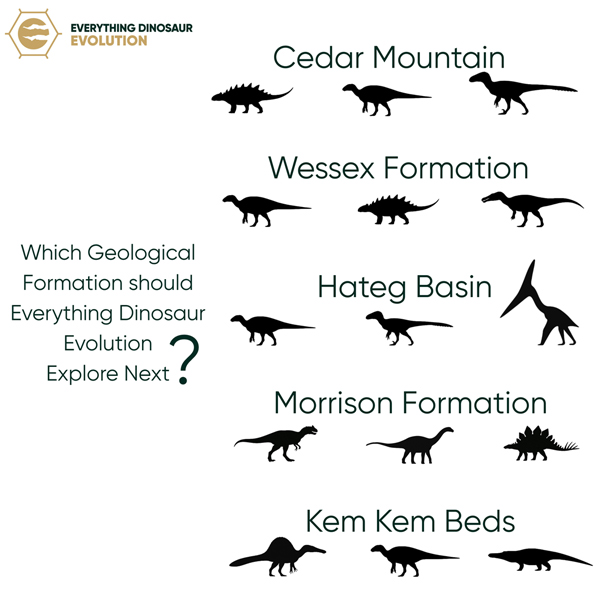A New Iguanodontian Dinosaur from the Isle of Wight with a “Sail” on its Back
Researchers have described a new dinosaur species from the Wessex Formation of the Isle of Wight. The dinosaur, an iguanodontian, has been named Istiorachis macarthurae. The extended neural spines associated with the dorsal and caudal vertebrae suggest that it possessed a sail structure.
Possible explanations for neural spine elongation in the Ankylopollexia include biomechanical advantage, perhaps related to increasing body size and a move towards quadrupedalism. In addition, such structures could have evolved as aids to visual signalling or to deter rivals. Perhaps these changes in body shape were driven by sexual selection, species recognition or both
Hyperelongation of neural spines is known in a number of dinosaur taxa. Most recorded incidences occur during the Barremian and early Aptian faunal stages of the Early Cretaceous. The evolution of elongated neural spines probably took place due to a variety of evolutionary pressures. The drivers for this body shape probably differed in different taxa. Furthermore, it is likely that no single explanation fully supports the variation seen throughout the Cretaceous.
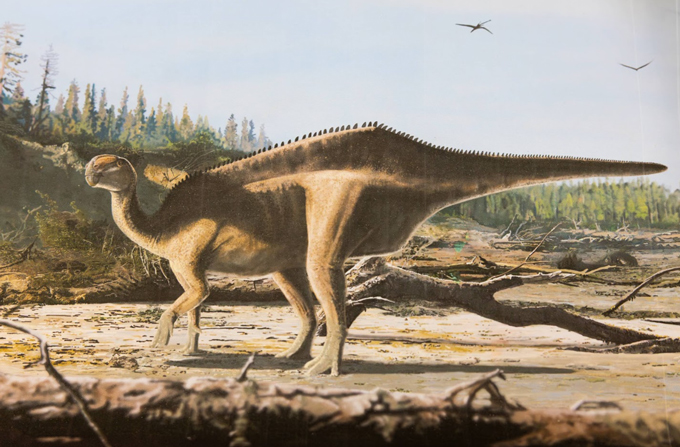
A life reconstruction of Istiorachis macarthurae. Picture credit: James Brown (University of Portsmouth).
Picture credit: James Brown (University of Portsmouth)
Istiorachis macarthurae
This new iguanodontian dinosaur was identified by Jeremy Lockwood, a retired GP, as part of his PhD studies at the University of Portsmouth and the Natural History Museum, London. Detailed analysis of fossil bones held in the collection of the Dinosaur Isle museum, Isle of Wight led to the identification of several autapomorphies which resulted in the establishment of this new taxon.
The genus name is derived from the Ancient Greek words ἱστίον (istion), meaning a sail, and ῥάχις (rachis), the spine or backbone. It refers to the probable sail-back appearance of the dinosaur.
Pronounced Is-tree-oh-rak-is mack-ar-four-eye, the species name honours the Isle of Wight resident Dame Ellen MacArthur. Dame Ellen MacArthur is a famous sailor. Therefore, it seemed appropriate to honour her by naming a possible sail-backed dinosaur after her. In 2005, she set a world record for the fastest solo non-stop voyage around the world on her first attempt and Dame Ellen MacArthur has also founded the Ellen MacArthur Cancer Trust for young people on the Isle of Wight.
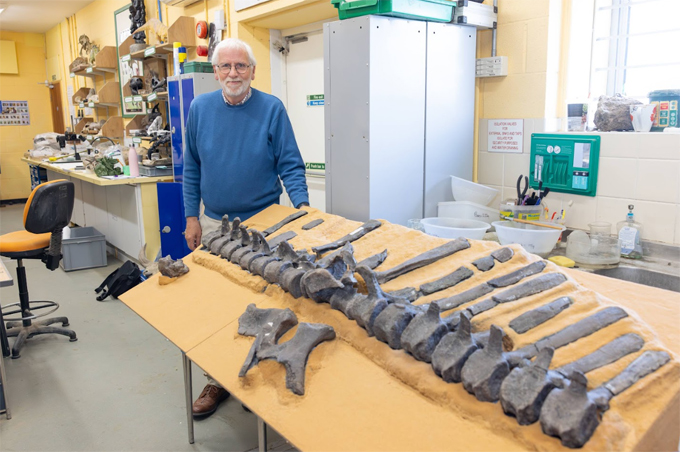
Dr Jeremy Lockwood with the spinal column of Istiorachis macarthurae with some of the pelvic elements (pubis and head of the ischium). Note the elongated neural spines. Picture credit: University of Portsmouth.
Picture credit: University of Portsmouth
Smaller Iguanodontians Including Istiorachis macarthurae
Dr Lockwood has played a significant role in helping palaeontologists to better understand the smaller iguanodontians from the Isle of Wight. This is the third iguanodontian named from fossils found on the island in recent years. For example, last year (2024), Comptonatus chasei was described. Moreover, in 2021, an iguanodontian with an unusual bulbous snout was described (Brighstoneus simmondsi).
To read Everything Dinosaur’s blog post about the discovery of Comptonatus chasei: A New Dinosaur From the Isle of Wight.
To learn more about B. simmondsi: A New Iguanodontid from the Isle of Wight.
A Highly Diverse Early Cretaceous Ecosystem
The fossil material is estimated to be around 125 million years old. It came from Wessex Formation exposures from the southwestern part of the island. This discovery further demonstrates the remarkable dinosaur diversity during the Early Cretaceous. In addition, it helps to cement the Isle of Wight as a globally significant location for dinosaur fossils.
Commenting on how the new taxon was established, Dr Lockwood explained:
“While the skeleton wasn’t as complete as some of the others that have been found, no one had really taken a close look at these bones before. It was thought to be just another specimen of one of the existing species, but this one had particularly long neural spines, which was very unusual.”
The findings have been published this week in the academic journal “Papers in Palaeontology”.
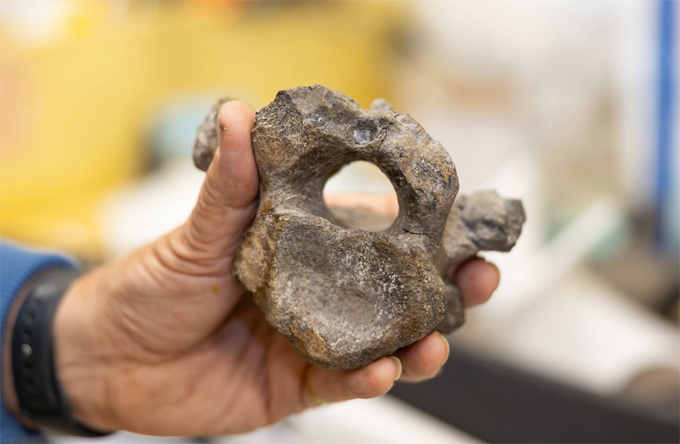
Dr Lockwood holding the single cervical vertebra (neck bone) known from Istiorachis macarthurae. Picture credit: University of Portsmouth.
Picture credit: University of Portsmouth
Dr Lockwood added:
“Evolution sometimes seems to favour the extravagant over the practical. While the exact purpose of such features has long been debated – with theories ranging from body heat regulation to fat storage – researchers believe that the most likely explanation in this case is visual signalling, possibly as part of a sexual display and this usually is because of sexual selection. In modern reptiles, sail structures often show up more prominently in males, suggesting that these attributes evolved to impress mates or intimidate rivals. We think Istiorachis may have been doing much the same.”
A Detailed Analysis of Neural Spines in Iguanodontids and Their Relatives
A large database was constructed consisting of data on the neural spines of iguanodontids and their close relatives. The database was created using observations, photographs, scientific illustrations and reconstructions of vertebrae. The data enabled the researchers to trace the evolutionary history of elongated neural spines within the Iguanodontia. This analysis permitted the team to identify broad trends in the evolution of sail-like structures.
Dr Lockwood stated:
“These methods let us move beyond simply describing the fossil and actually test hypotheses about its function. We showed that Istiorachis’s spines weren’t just tall – they were more exaggerated than is usual in Iguanodon-like dinosaurs, which is exactly the kind of trait you’d expect to evolve through sexual selection.”
Co-author of the study, Professor Susannah Maidment (London Natural History Museum), added:
“Jeremy’s careful study of fossils that have been in museum collections for several years has brought to life the iguanodontian dinosaurs of the Isle of Wight. His work highlights the importance of collections like those at Dinosaur Isle, where fossil specimens are preserved in perpetuity and can be studied and revised in the light of new data and new ideas about evolution. Over the past five years, Jeremy has single-handedly quadrupled the known diversity of the smaller iguanodontians on the Isle of Wight, and Istiorachis demonstrates we still have much to learn about Early Cretaceous ecosystems in the UK.”
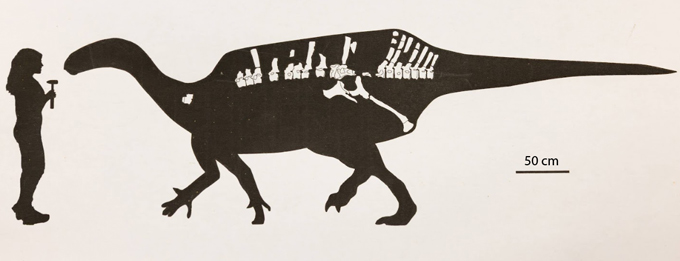
A silhouette of Istiorachis macarthurae showing known fossil material and providing a size estimate. Note scale bar = 50 cm. Picture credit: James Brown (University of Portsmouth) with additional annotation by Everything Dinosaur.
Picture credit: James Brown (University of Portsmouth) with additional annotation by Everything Dinosaur
Highlighting a Broader Evolutionary Trend
Importantly, Istiorachis macarthurae appears to highlight a broader evolutionary trend. The database suggests that elongation of neural spines in iguanodontians began in the Late Jurassic. It becomes an increasingly common feature during the Early Cretaceous. However, true hyper-elongation, where neural spines reach heights in excess of four times the height of the vertebral body remain rare.
Similar elongated spines are seen in living reptiles. For example, many species of extant lizards sport elaborate crests and sail-like structures. These play a role in visual communication as well as signalling the health and vitality of the animal.
Everything Dinosaur acknowledges the assistance of a media release from the University of Portsmouth in the compilation of this article.
The scientific paper: “The origins of neural spine elongation in iguanodontian dinosaurs and the osteology of a new sail-back styracosternan (Dinosauria, Ornithischia) from the Lower Cretaceous Wealden Group of England” by Jeremy A. F. Lockwood, David M. Martill, Susannah C. R. Maidment published in Papers in Palaeontology.
The award-winning Everything Dinosaur website: Prehistoric Animal Models and Toys.


